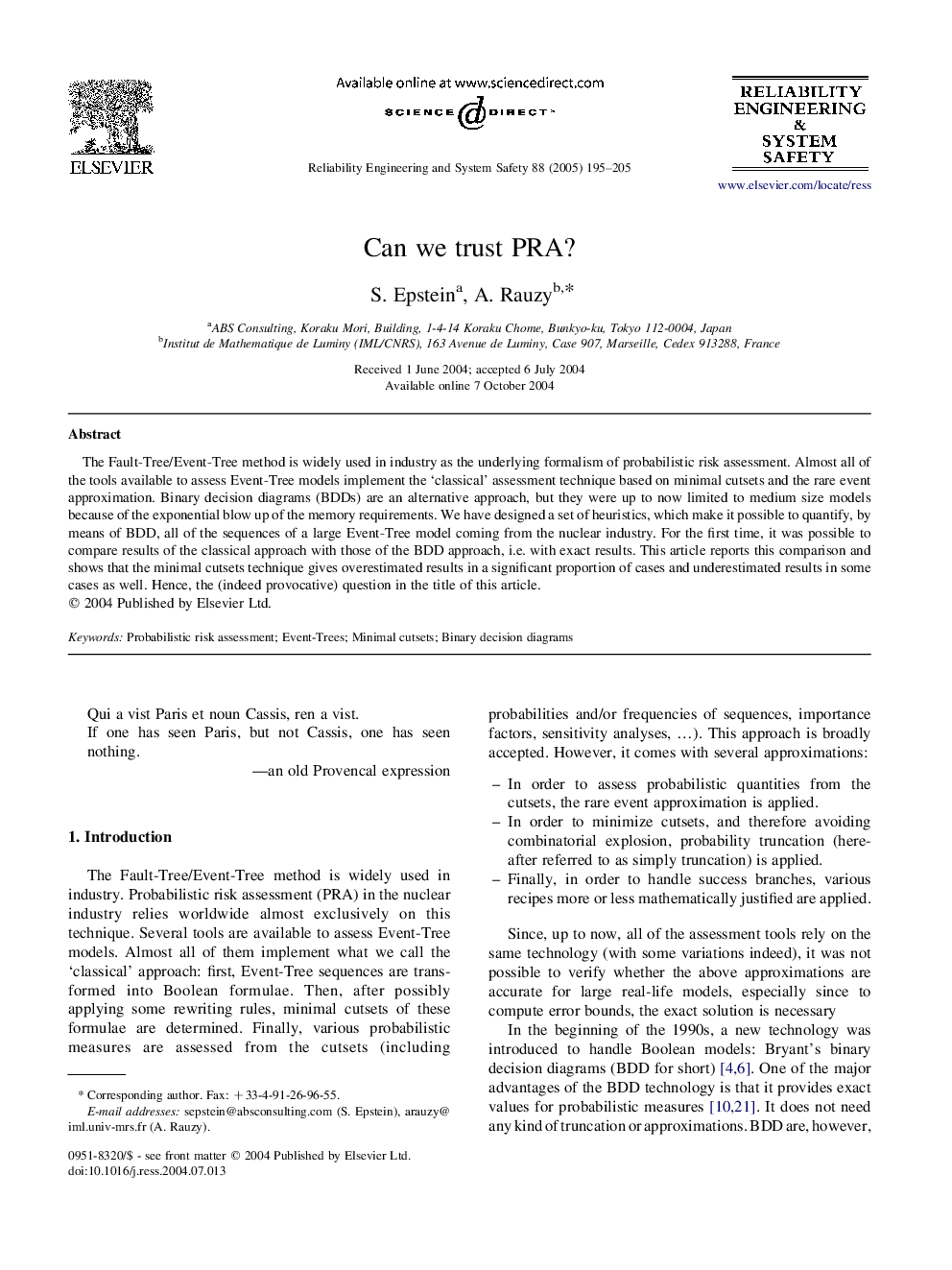| Article ID | Journal | Published Year | Pages | File Type |
|---|---|---|---|---|
| 10420030 | Reliability Engineering & System Safety | 2005 | 11 Pages |
Abstract
The Fault-Tree/Event-Tree method is widely used in industry as the underlying formalism of probabilistic risk assessment. Almost all of the tools available to assess Event-Tree models implement the 'classical' assessment technique based on minimal cutsets and the rare event approximation. Binary decision diagrams (BDDs) are an alternative approach, but they were up to now limited to medium size models because of the exponential blow up of the memory requirements. We have designed a set of heuristics, which make it possible to quantify, by means of BDD, all of the sequences of a large Event-Tree model coming from the nuclear industry. For the first time, it was possible to compare results of the classical approach with those of the BDD approach, i.e. with exact results. This article reports this comparison and shows that the minimal cutsets technique gives overestimated results in a significant proportion of cases and underestimated results in some cases as well. Hence, the (indeed provocative) question in the title of this article.
Related Topics
Physical Sciences and Engineering
Engineering
Mechanical Engineering
Authors
S. Epstein, A. Rauzy,
